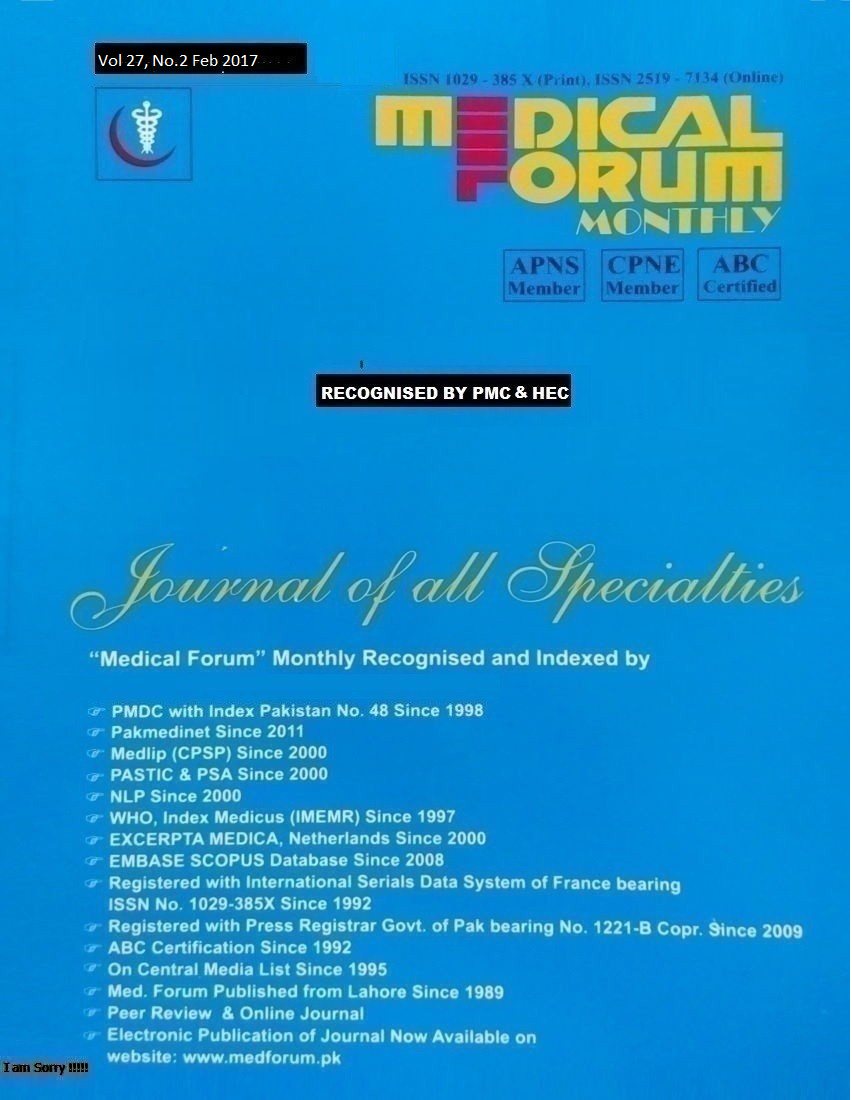
12. Outcome of Hand Function after Extensor Indices Proprius Opponensplasty
1. Kamran Khalid 2. Farrukh A Khalid 3. Moazzam N Tarar
1. Asstt. Prof. of Plastic Surgery, 2. Senior Registrar of Plastic Surgery, 3. Prof. of Plastic Surgery, Jinnah Burn & Reconstructive Surgery Center, Jinnah Hospital, Allama Iqbal Medical College, Lahore
ABSTRACT
Objective: To assess the functional improvement in the hand after opponensplasty.
Study Design: Descriptive study
Place and Duration of Study: This study was conducted at Plastic Surgery Department Jinnah Hospital, Lahore from October, 2005 to March, 2015.
Materials and Methods: A total of 40 patients with loss of opposition of thumb were included in the study. Their opposition was lost either due to median nerve or both median and ulnar nerve injury or directly damaged thenar muscles. Patients in whom there is restricted range of thumb motion or scarring in the route of tendon transfer were excluded from the study. After taking informed consent Extensor Indices Proprius tendon transfer was done. Post-operatively cast was given for 4 weeks and protective splintage was applied for another 2 weeks. Improvement in the hand function was recorded at conclusion of study.
Results: Four patients lost follow-up. Out of 36 patients, 26 (72%) patients showed good results, 6 (17%) showed fair results and 4 (11%) showed poor results. 25 patients (69%) had good Ka andji score, while 7 (20%) had fair and 4 (11%) had poor score. Mean DASH score was 24. Overall patient’s satisfaction was very good. Most of the patients hand function improved significantly.
Conclusion: Our study results strongly suggest Opponensplasty with Extens r Indices Proprius is an excellent procedure for restoring opposition in patients with median or both median and ulnar nerve injury at wrist.
Key words: Opponensplasty, EIP transfer, loss of opposition, distal median nerve injury, DASH score, Kapandji score.
Citation of article: Khalid K, Khalid FA, Tarar MN. Out ome of Hand Function after Extensor Indices Proprius Opponensplasty. Med Forum 2016;27(2):45-48
